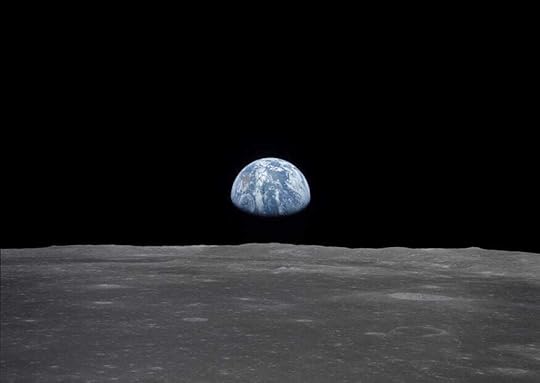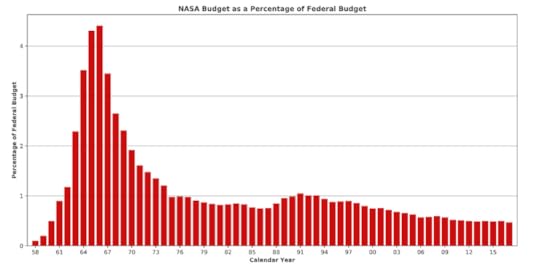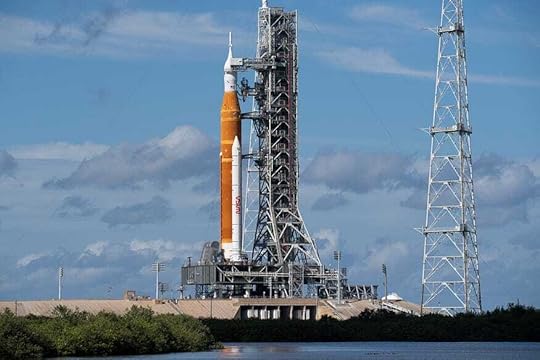Matthew S. Williams's Blog, page 2
April 24, 2025
My Interview with From Here to the Stars!
Okay, now this was a surprise! Twice this month, interviews I previously did (months or even more than a year ago!) have aired. The first was the interview I had with Bharti Sharma of AADYA Geo Talks, which recently aired after a few months (and was the subject of my last post). The other was an interview with Stephen Euin Cobb, the host of the Interstellar Research Group‘s podcast From Here to the Stars, that aired in January. However, I only heard about it now because the Interstellar Research Group (IRG) featured me in a promo posted on LinkedIn!
I was honored, to say the least. I imagine they do this all the time, but on this particular occasion, they put my face on their podcast series. Little ol’ me, how about that? Anyway, it was a lovely reminder of a very good interview I had with a distinguished science fiction author and award-winning podcaster and videographer. The subject of our chat was the chapter I wrote for the anthology The Ross 248 Project, a collection of SF shorts and science essays (edited by NASA scientists Les Johnson and Ken Roy) that explores the possibility of terraforming planets that orbit red dwarf suns.
This one is not so long, so please feel free to check it out:
April 21, 2025
My Interview with AADYA Geo Talks!
A few months back, I had the honor of appearing on AADYA Geo Talks, the podcast series launched by Bharti Sharma and the organization she founded – AADYA, whose name means “origin” in Hindi. As a geologist and world-traveller, Sharma launched this organization to promote knowledge about planetary and geoscience and create opportunities for collaborative research to address critical global challenges.
During the interview, we talked about how I got into science journalism, my podcast series, and my science fiction writing. The interview lasted for more than an hour because she asked great questions about a range of wonderful topics (and she let me talk for as long as I wanted!) Here’s how she described our conversation:
“In this episode of AADYA Geo Talks, we explore the mind of a space journalist who has spent years unraveling the wonders of the universe. From the allure of dark matter to the search for extraterrestrial life, Matthew takes us on a journey through the most fascinating corners of space science. But here’s where it gets even more intriguing—science fiction has always fueled real-world space missions. “
Check it out, and watch it in segments if you need to! Also, visit the AADYA website to learn more about their education, outreach, and collaborative efforts.
April 5, 2025
Public Service Announcement!
The following is an appeal to public mental health and reason. Have you or someone you love been accused of suffering from TDS? If so, you are entitled to clarification on this condition and what sufferers experience. Here is the proper definition of TDS and recommendations on how you or someone you love can prevent and (if necessary) treat this condition.
Trump Derangement Syndrome: (noun) A condition where subjects lose their capacity for rational thought, empathy, and civility upon endorsing Donald J. Trump (hereafter, DJT). Other symptoms include paranoid delusions, belief in conspiracy theories, and retrograde amnesia – most notably, the loss of all memory pertaining to previous opinions and statements made about Trump.
Cases of collective TDS have also been noted, in which subjects experience a notable decline in their ability to reason and think intelligently due to exposure to DJT. Long-term symptoms include the repetition of false statements (without thought or reflection) made by DJT and his supporters.
Multiple instances have been reported, including references to DEI, CRT, BLM, ACA, DREAM, LGBTQ+, NWO, and other abbreviations. In all cases, subjects display complete and total ignorance of these concepts but vehemently condemn them and blame them for all the problems facing society – as well as the delusional belief that only DJT and his policies can protect them.”
Some common examples of conspiracy theories associated with DJT include (but are not limited to), White Genocide, Flat-Earth Theory, Replacement Theory, Creationism, False Flag operations, and a belief in something called “The Deep State.” Other well-documented delusions include the belief that:
Vaccines contain microchipsThe 26+ women he raped or assaulted are “liars”Democrats abort babies after they’re bornDemocrats are “grooming children”Schools are performing gender transition surgeryTrump won the 2020 electionThe election was “stolen” by left-wingers, some now deceasedThere’s a vast media conspiracy to hurt DJTElites are out to get Trump because he “drained the swamp.”Ukraine started the war with RussiaUkraine is losing the war with RussiaUkraine is run by NazisNazis are a left-wing political movementTariffs will correct “economic injustice”Trump is the most “persecuted” president in U.S. historyWarning signs that you or someone you love may be suffering from DJT include (but are not limited to) using the following terms unironically:
“Left-wing conspiracy”“Drain the swamp”“Rigged!”“Let’s go Brandon!”“FoxNews rules”“Deep State”“Third Term”“Lamestream media”Luckily, DJT is a treatable condition, except in extreme cases where the subject suffers from additional personality disorders and/or mental illnesses – especially when combined with extravagant wealth. Treatment options include:
Turning off FoxNewsTurning off Newsmax, OANN, Breitbart, and other alt-right “news”Unsubscribing from Truth SocialUnsubscribing from XLeaving FB chat groupsLimiting time on social media and internet forumsStepping outside and interacting with people different than youReading a book, especially one that’s not a right-wing polemicExposure therapy to gay, trans people, and people of colorEmpathy workshopsWhite and male privilege checksListening to family members you cut ties with over TrumpThis has been a public service announcement. Good night, and good luck! Seriously, GOOD LUCK!
March 25, 2025
Episode 97 of Stories from Space is Now Live!
For this week’s episode, I had a very special guest: Dr. Moriba Jah, a man with more titles, credentials, and honors than I could possibly fit into a single paragraph. Check out his website if you doubt me or just want to know what they all are. But to give you the TL: DR version, Moriba Jah is a Professor of Aerospace Engineering and Engineering Mechanics at The University of Texas at Austin. He’s a major advocate for the “stewardship” of Earth and space and a promoter of sustainable living in both.
He has worked extensively with NASA, the Air Force Research Laboratory, and several premier academic institutions. He is also well-traveled and has earned a wide following for his advocacy for sustainability and humanity’s future in space. If we are to live beyond Earth, he states, humanity must either evolve by means of augmentation (homo machina), or we will need to take Earth’s systems with us – meaning bioregenerative life support systems and living, or Terraforming.
He’s been interviewed and featured by so many outlets and in so many forums that I consider myself the luckiest podcaster to actually secure an interview with him. Follow the links to learn more and hear some truly quotable quotes!
Where to Listen:SimplecastApple PodcastsSpotifyAmazon MusicYoutubeMarch 18, 2025
Episode 96 of Stories from Space is now Live!
Forgive me for the late announcement, folks, but life has been rather busy lately. In any case, the latest episode of SfS is out, and the subject is, “What discoveries has the James Webb Space Telescope made so far?” This is a subject that I’m rather fond of, given the many scientific breakthroughs that have come from Webb’s three General Observations cycles. They are now into number four, which I am covering for Universe Today. And this has made me want to take stock of everything this next-generation observatory has revealed about the Universe until now.
The breakthroughs it has allowed for can be broken down into three categories: galaxies that existed in the very early Universe, the first supermassive black holes (SMBHs), and exoplanet characterization. Check the links below to hear more!
Where to Listen:SimplecastApple PodcastsSpotifyAmazon MusicYoutubeMarch 3, 2025
Episode 95 – WTF is Happening at NASA? (Part II) – is Now Live!
In this two-part episode, I interviewed former NASA scientist and astrobiologist Keith Cowing, the creator and editor of NASA Watch and Astrobiology.com. In part I, we discussed the current state of things at NASA amid the DOGE shakeup (somewhere between uncertainty and total chaos). In this installment, we followed this up with a look at how NASA’s long-term plans, which have changed many times in the past twenty years. Follow the links below to learn more.
Where to Listen:SimplecastApple PodcastSpotifyAmazon MusicYoutubeEpisode 94 – WTF is Happening at NASA? (Part II) – is Now Live!
In this two-part episode, I interviewed former NASA scientist and astrobiologist Keith Cowing, the creator and editor of NASA Watch and Astrobiology.com. In part I, we discussed the current state of things at NASA amid the DOGE shakeup (somewhere between uncertainty and total chaos). In this installment, we followed this up with a look at how NASA’s long-term plans, which have changed many times in the past twenty years. Follow the links below to learn more.
Where to Listen:SimplecastApple PodcastSpotifyAmazon MusicYoutubeFebruary 27, 2025
Episode 94 – WTF is Happening at NASA? (Part I) – is Now Live!
This week’s episode was a special treat! I sat down with former NASA scientist and astrobiologist Keith Cowing, the creator and editor of NASA Watch and Astrobiology.com. Keith’s extensive experience as an industry insider and a scientist has made him a trusted news source for millions of people, including myself. In his time, he witnessed many developments and advancements and played a major part in advancing the fields of astrobiology and space exploration.
He is a trained biologist, a specialist in payloads and biospecimen containment, and was part of the -Space Station Freedom Program. He is also very well-traveled, having been to Nepal and the Arctic Circle and even participated in centrifuge training and zero-g flights. I only got to hear a bit about all those experiences during our chat, but we got deep into discussing the current state of things at NASA. Our talk went so long, I had to break it into two segments to do it justice.
Follow the links below to hear Part I of our interview.
Where to Listen:SimplecastApple PodcastsSpotifyAmazon MusicYoutubeFebruary 20, 2025
Episode 93 of Stories from Space is now Live!
This week, I sat down with Dr. Will Grundy, an astronomer and planetary scientist with the Lowell Observatory—the place where Dr. Tombaugh discovered Pluto in 1930! Who better to speak to about Pluto and the “Great Planet Debate”? The debate began in the early 2000s with the discovery of many new objects orbiting beyond Pluto. It was “resolved” with the IAU decision of 2006 that defined a planet as a celestial body that:
“(a) is in orbit around the Sun, (b) has sufficient mass for its self-gravity to overcome rigid body forces so that it assumes a hydrostatic equilibrium (nearly round) shape, and (c) has cleared the neighbourhood around its orbit.”
As you’ll see in this episode, the debate is far from over and can get pretty contentious. Planetary scientists, astrogeologists, and people from other disciplines have criticized the IAU’s rather narrow definition and believe that planethood should be extended to all the major bodies of our Solar System. Follow the links below to learn why…
Where to Listen:SimplecastApple PodcastsSpotifyAmazon MusicYoutubeFebruary 19, 2025
Apollo, Vietnam, and Global Problems: A Question of Priorities
Between 1961 and 1973, there was significant pushback from people who lamented the fact that so many resources were being directed toward sending astronauts to the Moon while poverty, social injustice, and inequality were still rampant. Neil Maher, a professor of history at the New Jersey Institute of Technology, addressed this in his 2017 book Apollo in the Age of Aquarius.
According to Maher, the Apollo space program was a source of division among Americans. Whereas supporters viewed it as a way of energizing a country that had lost its way, those opposed saw it as a huge waste of money that should have gone to solving societal problems. As Maher summarized it:
“There was a debate about what America was at the time. Was it a country to spend $20 billion to land two men on a dead rock in space or try to solve some of the problems closer to home on Earth? A lot of grassroots movements argued to use the [NASA] money to solve problems here.”
America at a CrossroadsNowhere was this divide more apparent than with the Civil Rights and other grassroots movements during the 1960s and 70s. While NASA was committing billions in research and development toward three-stage rockets and spacecraft that would allow human beings to operate in space and land on the Moon, Indigenous Peoples, African-Americans, women, gays, and other minorities were fighting for basic equality, social justice, and their very lives.
As Dr. Martin Luther summarized in his address before Congress in 1967:
“Without denying the value of scientific endeavor, there is a striking absurdity in committing billions to reach the moon where no people live, and from which none presently can benefit, while the densely populated slums are allocated minuscule appropriations. With the continuation of these strange values in a few years we can be assured that we will set a man on the moon and with an adequate telescope he will be able to see the slum on earth with their intensified congestion, decay, and turbulence.”
Eldridge Cleaver, a leader of the Black Panther Party and prominent civil rights activist, took things further. In 1969, shortly after the Moon Landing, he stated that the Apollo program was a “circus to distract people’s minds from the real problems, which are here on the ground.” His words inspired poet, musician, and scholar Gil Scott-Heron to write the famous spoken-word poem “Whitey’s on the Moon” (video below), which captured the dichotomy perfectly.
As part of Scott-Heron’s debut album Small Talk at 125th and Lenox (released in 1970), the poem brilliantly captures the contrast between the harsh conditions in American cities with the lofty achievements of the Apollo astronauts:
“A rat done bit my sister Nell
With whitey on the moon
Her face and arms began to swell
And whitey’s on the moon
I can’t pay no doctor bills
But whitey’s on the moon
Ten years from now I’ll be payin’ still
While whitey’s on the moon
The man just upped my rent last night
Cause whitey’s on the moon
No hot water, no toilets, no lights
But whitey’s on the moon
I wonder why he’s upping me?
Cause whitey’s on the moon?
Well I was already giving him fifty a week
With whitey on the moon
Taxes taking my whole damn check
Junkies making me a nervous wreck
The price of food is going up
And as if all that shit wasn’t enough:
A rat done bit my sister Nell
With whitey on the moon
Her face and arm began to swell
And whitey’s on the moon
Was all that money I made last year
For whitey on the moon?
How come I ain’t got no money here?
Hmm! Whitey’s on the moon
Y’know I just ‘bout had my fill
Of whitey on the moon
I think I’ll send these doctor bills
Airmail special
To whitey on the moon.”
Sixty years later, this poem still speaks to how the “richest country in the world” can’t provide millions of its own citizens with proper housing, health care, food security, or basic human rights. In the era of commercial space, which billionaires like Richard Branson are calling the “dawn of a new Space Age,” the poem has garnered renewed interest and attention via social media.
 NASA
NASAThe country with more billionaires than any developed nation also has the most people per capita in jail and/or living beneath the poverty line. For many, the problems that have become a permanent state of affairs in the U.S. began in earnest during the 1970s in the post-Apollo Era, which was marked by an economic downturn, rising unemployment, the decay of America’s inner cities, increasing violent crime, and the rise of neo-Conservativism.
However, a closer look at the same period reveals something far more jarring. While America was highly focused on the Apollo Program and the high cost of scientific accomplishments, a far more costly and grisly situation was taking place overseas. Moreover, it was far more stark in capturing the inequality, poverty, and misplaced priorities that characterized America (and still do today).
The Vietnam WarBetween 1963 and 1973, concurrent with the Apollo program, the U.S. was engaged in an ongoing conflict in Vietnam. The war began shortly after the Battle of Dien Bien Phu, waged between the Viet Minh and French colonial forces in the northwest region of modern-day Vietnam. After defeating the forces of the French Union, Ho Chi Minh — leader of the Viet Minh and Vietnam’s independence movement — wanted to march on the south.
However, he was forced to agree to a ceasefire since the Soviet Union was not willing to offer support, while China and North Korea were exhausted from the Korean War (1950–53). In 1954, French Indochina was officially dissolved with the Geneva Conference, leading to the creation of the Democratic Republic of Vietnam (DRV), the Republic of Vietnam (RVN), Cambodia, and Laos. After the withdrawal of the withdrawal of the French, the U.S. became involved as the RVN faced an ongoing insurgency by pro-Communist forces (the Viet Cong).
Between 1961 and 1963, American involvement escalated under Kennedy due to the growing insurgency and the inability of the Army of the Republic of Vietnam (ARVN) to contain them. Things reached a turning point after Jan. 2, 1963, with the assassination of RVN president Ngô Đình Diệm, a member of Vietnam’s Catholic minority who persecuted Buddhists and was notorious for his autocratic and brutal nature.
After Kennedy was assassinated ten months later (Nov. 22, 1963), President Johnson escalated America’s commitment further after the Gulf of Tonkin incident. This consisted of two alleged engagements between the U.S. Navy and ships belonging to the DRV. The first took place on Aug. 2, 1964, when U.S. forces were carrying out covert amphibious operations close to North Vietnamese territorial waters, which triggered a response from North Vietnamese forces.
 National Archives
National ArchivesThe second incident, which turned out to be imaginary, occurred two days later when a U.S. warship mistook a false sonar reading for a possible torpedo attack. In response, the Gulf of Tonkin Resolution was passed, giving President Johnson authorization to deploy military forces to South Vietnam and commence military operations against North Vietnam. What followed was then years of undeclared war between the U.S. and RVN forces in the south and the Viet Cong and their DRV allies in the north.
The fighting consisted largely of patrol actions, guerilla-style warfare, and several small-scale battles and skirmishes. These would routinely end with U.S. forces relying on artillery or air strikes to clear out enemy positions after suffering significant losses. The U.S. and RVN forces would then withdraw from these “hot spots,” leaving them to the Viet Cong and NVA to re-occupy later.
However, large-scale operations and battles also took place, like the Battle of Ia Drang Valley, Khe Sanh and Huế (two battles that were part of the larger Tet Offensive), and the Easter Offensive (during the final days of the war). Like the guerilla actions and smaller battles, these battles came down to American forces leaning on their “fire superiority” (artillery) and “air superiority” (air power) to inflict the heaviest losses on the enemy.
Though the U.S. and RVN forces managed to repel the enemy in almost every instance, none of these engagements could be called “victories” in the strictest sense. Strategically, the engagements served no purpose and did not result in any meaningful progress. Nor could the U.S. and RVN attack the north directly due to the (DMZ) and the ongoing Paris Peace Talks.
As a result, the only measure the U.S. could use was “body count,” hoping that a favorable kill-loss ratio would demoralize the Viet Cong and NVA to the point that they’d back off. This was not only unrealistic, but because most of the combat consisted of guerilla-style engagements, U.S. forces were rarely able to make accurate body counts. This led to inflated casualty estimates and fed suspicions among the public that the U.S. government was lying about the war.
 Wayne State University
Wayne State UniversityIn addition, the level of uncertainty and the lack of metrics for measuring progress inevitably led the U.S. forces to adopt blind, brute-force tactics. This included multiple air campaigns throughout the war, including Operation Barrel Roll, Arc Light, Rolling Thunder, Linebacker I and II, and many more. These campaigns consisted of airstrikes by the USAF, U.S. Navy, and USMC air forces against infrastructure in the North and the Ho Chi Minh Trail along the border region in neighboring Cambodia.
Between these larger campaigns, which usually involved massive strikes by fleets of B-52s, air pilots flew countless sorties around the clock to destroy infrastructure in North Vietnam and harass NVA and Viet Cong forces in the south. In total, the U.S. dropped an estimated 6.95 million metric tons (7,662,000 US tons) of explosives during the Vietnam War, more than three and a half times the amount used in all theatres in World War II combined!
Between 1961 and 1971, U.S. forces also sprayed the countryside with 45 million liters (12.1 million gallons) of Agent Orange and an additional 28 million liters (7.4 million gallons) of other chemical defoliants. These chemicals defoliated millions of acres of forests and farmland, many of which remain poisoned to this day. Millions of Americans and Vietnamese are still affected by the wartime U.S. spraying of Agent Orange and other herbicides over southern and central Vietnam.
According to the Red Cross, an estimated three million Vietnamese have been affected by dioxin, including at least 150,000 children born with serious congenital disabilities.
The Cost of WarIn terms of the human cost of the war, an estimated 6 million people in Southeast Asia were killed. This includes soldiers fighting for North and South Vietnam, civilians in both countries, as well as countless Cambodians and Laos killed by the bombings, chemicals, and conflicts that happened as a result.
This included the Cambodian Genocide (1975–1979), which resulted in the murder of 1.2 to 2.8 million people, while an additional 275,000–310,000 people were killed in the ongoing civil war (1965 and 1999). Neighboring Loas was also engaged in a civil war from 1959 and 1975 that left a total of 20,000–62,000 people dead. There were similar parallel conflicts that took place as part of the Third Indochina War, which lasted from 1975 to 1991 and over 415,000 dead.
 Patrick Christain/Getty Images
Patrick Christain/Getty ImagesFor the United States, in addition to the 58,000 soldiers killed in action, the war left close to a million Americans with physical and mental trauma for life. It is unclear how many Asians were left with permanent trauma from the war. But without a shred of doubt, it was exponentially higher. These measures did nothing to shorten the war and had no measurable benefits, only casualties!
Financially, the war cost $1.79 trillion (in 2024 dollars) in direct military spending, military and economic aid, and the long-term costs of the war. This was 10 times the revenue spent on education and 50 times spent on housing and community development in the same period. It effectively ended the “Great Society” reforms that Lindon Johnson had begun, which included his proposed “war on poverty.”
The war also shone a bright light on racial and class discrimination in the U.S. Though African Americans represented only 12% of the U.S. population during this period, they accounted for 16.3% of those drafted and up to 25% of enlisted men in the Army. However, only 2% of officers across all branches were Black, and overt acts of racism (including unequal assignments and disciplinary actions) were regularly reported. In total, more than 300,000 African Americans served in the war, and they accounted for 12.4% of the total casualties.
Upon returning to the U.S., they experienced greater difficulty than White veterans, including finding jobs, accessing healthcare, and dealing with societal prejudices. The same issues affected other minorities who served in Vietnam, including Indigenous and Hispanic veterans. A 2008 study found that
chronic PTSD was more prevalent among African American veterans and other minorities who served.
In short, nothing good came from the Vietnam War and the parallel conflicts it led to. It caused nothing but death, destruction, and suffering, much of which is still felt by millions of people today.
The Cost & Benefits of SpaceMeanwhile, the scientific and human benefits of landing six missions and twelve astronauts on the Moon were immense, leading to research breakthroughs and countless commercial, medical, and other applications that greatly benefited humanity. In fact, famed science fiction author Robert A. Heinlein went before Congress in 1979 to talk about the medical benefits of space exploration.
Having just recovered from one of the earliest known vascular bypass operations to correct a blocked artery, he addressed how NASA’s research made the life-saving surgery possible. These included Computer Assisted Tomography (CAT), image enhancement techniques, Doppler ultrasound, and catheter technology. As he stated:
“I am never going to get picked for Mr. America. You can see that. I am not going to be picked for the Olympics. I have climbed my last mountain. But I am here, I am alive, I am functioning due to the skill of a great surgeon, plus — a very necessary plus — four different spinoffs of the space program.”
 NASA
NASAIn 1972, the agency created a special office named NASA Spinoff tasked with tracking how their research led to breakthroughs. Examples of these “spinoff” technologies that owe their existence to the Apollo Program (and related efforts) include:
Chemical filtration, which was key to the development of kidney dialysis machines and water recyclingCochlear implants,Polyurethane foam insulationTeflon-coated fiberglassCardiovascular conditioning equipment,Flame-resistant textiles,Water purification technology,Freeze-dried foodsCooling suitsSolar panelsMicrowave antennas,DustbustersThermal blanketsFirefighting equipmentIn human terms, the benefits of these “spinoff technologies” are immeasurable. Countless people owe their lives to these benefits, including Heinlein and my very own wife!
Financially, the costs and benefits of space exploration are more easily measured. From 1961 to 1973, the Apollo Program cost taxpayers an estimated $335.5 billion (in 2024 dollars), less than one-fifth the cost of the Vietnam War. Financially, they have yielded returns on investment (ROIs) that would make an investment banker wet their pants!
According to a report compiled by the NASA Johnson Space Center, “Space Resources Volume 4: Social Concerns,” the commercial applications resulting from the Apollo Era yielded an ROI of $7−$8. By 1992, when the report was released, that ROI ascended even farther, reaching $40 for every dollar spent. What’s more, from 1958 to today, NASA’s budget never exceeded 4.41% of federal spending. That was in 1966 when the agency was pursuing the Gemini and Apollo programs simultaneously.
 LPI/USRA
LPI/USRASince 1975, NASA’s budget has accounted for 1% or less of federal spending. Since 2012, that number has dropped to 0.5% or less. In the past three years, it has become even paltrier. In 2023–2024, NASA received a budget of $25.4 billion and $24.9 billion (respectively), roughly 0.36% of annual federal spending. NASA’s proposed budget for 2025 is once again $25.4, but inflation has reduced its value.
Despite space exploration’s benefits, there is a clear lack of knowledge about how it has improved people’s lives through medical advances, commercial applications, and other “spinoffs.” Heinlein also addressed this problem during his Congressional address, speaking about the one thing NASA had failed to do:
Priorities and False Equivalences
“[I]n one respect, NASA has fallen flat on its face. Its publicity is terrible, and has been right along. I don’t see how public relations people could manage the most romantic thing the human race has ever done be dull as ditchwater, but they did it. In fact, NASA can do anything.
“A thing that they have failed to do with this matter of the spinoffs, the serendipitous results, is to make the hookup so that people know about it. In fact, the most ironical thing I know of about our program is that there are thousands of people alive today who would be dead if it were not for spinoffs from the space programs and who have not the slightest idea that such is the case, and they complain about all that money being spent on silly stuns, and often they make that complain by long distance with a satellite bounce.”
As I like to think of it, space exploration is plagued by a modified version of Godwin’s Law, where any discussion about space will eventually lead to someone saying, “Money better spent fixing Earth first.”Another common trope that I’m sure everyone has heard more than once is, “How come we can put a man on the Moon, but we can’t [insert banal thing here].”
For reasons unclear to me, the false equivalence between spending money on space and neglecting our problems here at home endures. All too often, you have people assuming that it’s an either/or scenario or a case of resources better spent here at home. In this respect, little has changed since the Apollo Era. This attitude is reflected in the amount of resources taxpayers are willing to commit to space exploration.
 NASA/Joel Kowsky
NASA/Joel KowskyAccording to a poll conducted by the Pew Research Center in 2023, 65% of Americans surveyed believed it was essential that NASA continue to be involved in space exploration, while 69% said it was essential for the U.S. to “continue to be a world leader in space exploration.” However, data compiled by the National Opinion Research Center showed that in 40 years of being asked, “Do you think the nation is spending enough on space exploration?” those who replied “too little” never exceeded 22%.
While the number of people who said “too much” has declined considerably since the Apollo Era (where it peaked at over 60%), it was never superseded by those who supported a boost in spending. Since the 2000s, the largest share of those surveyed stated that they felt it was “about right,” despite how spending has continuously declined.
Compare that to military spending between 1958 and today, which peaked in 1967 at 9.42% of America’s Gross Domestic Product (GDP), or more than 50% of annual government spending. Since the Vietnam War, the general trend has been downward, ranging from 6.81% of GDP in 1982 (~35% of annual spending) to about 3% of GDP (20%) in 1999. During the “War on Terror,” it climbed to 4.9% of GDP (~30%) before reaching 13.8 and 12.9% of annual revenue in 2023/2024, respectively.
Yet, a Gallup poll conducted in 2024 showed that 44% of people surveyed thought military spending was not high enough. Another 37% said it was “about right,” while only 16% said it was too high. Naturally, some would argue that this level of military spending is necessary to protect the U.S. and its allies overseas. But a glance at the balance sheet shows that for the past 30 years, the U.S. has outspent every other nation globally by a significant margin.
In fact, a 2023 survey by the Stockholm International Peace Research Institute (SIPRI) showed that of the top 10 military spenders, the U.S. exceeded the next nine countries combined. Of those countries — China, Russia, India, Saudi Arabia, the UK, Germany, Ukraine, France, and Japan — seven are U.S. allies, while four are active NATO members. This trend is projected to continue this year, with spending approaching the next fourteen nations combined — twelve of whom are allies and six are NATO members.
This kind of disparity can be seen on a global scale. In 2024, global spending on space-related science and research was $135 billion USD, while military spending reached a record high of $2.46 trillion. In 2023, another record was reached as the world committed $7 trillion in fossil fuel subsidies. This includes direct and indirect subsidies, including the cost of environmental cleanup, oil spills, tax breaks, and other expenses incurred from fossil fuel production and consumption.
That same year, G20 nations committed just $168 billion to renewable energy subsidies, less than one-third of the $535 billion they gave to fossil fuels. The rationale for this was that the declining costs and rising efficiency of renewables made subsidies less needed! Granted, this record-high spending on warfare and fossil fuels was largely due to the war in Ukraine and rising energy prices, but the trend is unmistakable.
Globally, we spend exponentially more money on war and ensuring that oil and gas remain profitable (not affordable, profitable!) This is all happening at a time when the world is facing a mounting global crisis in the form of climate change that is fueling humanitarian crises — civil wars, drought and famine, massive forest fires, coastal flooding, and mass migrations. We are funding the things that are killing us and committing a fraction of the same resources we commit to the things that could save us!
Space exploration does indeed highlight the problem of our priorities and what we’re willing to spend money on, but not in the way people might think. Past and present, it is perceived as a waste or a drain on resources and is routinely raised as a false dichotomy where it’s either Earth or space. Meanwhile, committing massive amounts of money and resources to war and cheap gas and coal is considered necessary by many. Sometimes, as the Gulf Wars illustrated, the two are connected!
Nowhere is this discrepancy more clear than with the Apollo Program and the Vietnam War. One was a world-changing event that led to countless life-saving innovations and continues to inspire decades later. The other led to endless suffering and death and is something people struggle to forget. What is needed, IMHO, is for us to reframe the conversation. Instead of arguing “Earth vs. space,” perhaps we need to focus instead on the question: “What is best for Earth and its inhabitants?”
Once we do, we might finally see a redistribution of our energy and resources towards the things that measure the best of us instead of the worst, the things that lift us up and reduce poverty, immiseration, and war rather than contributing to the cycle of it.



